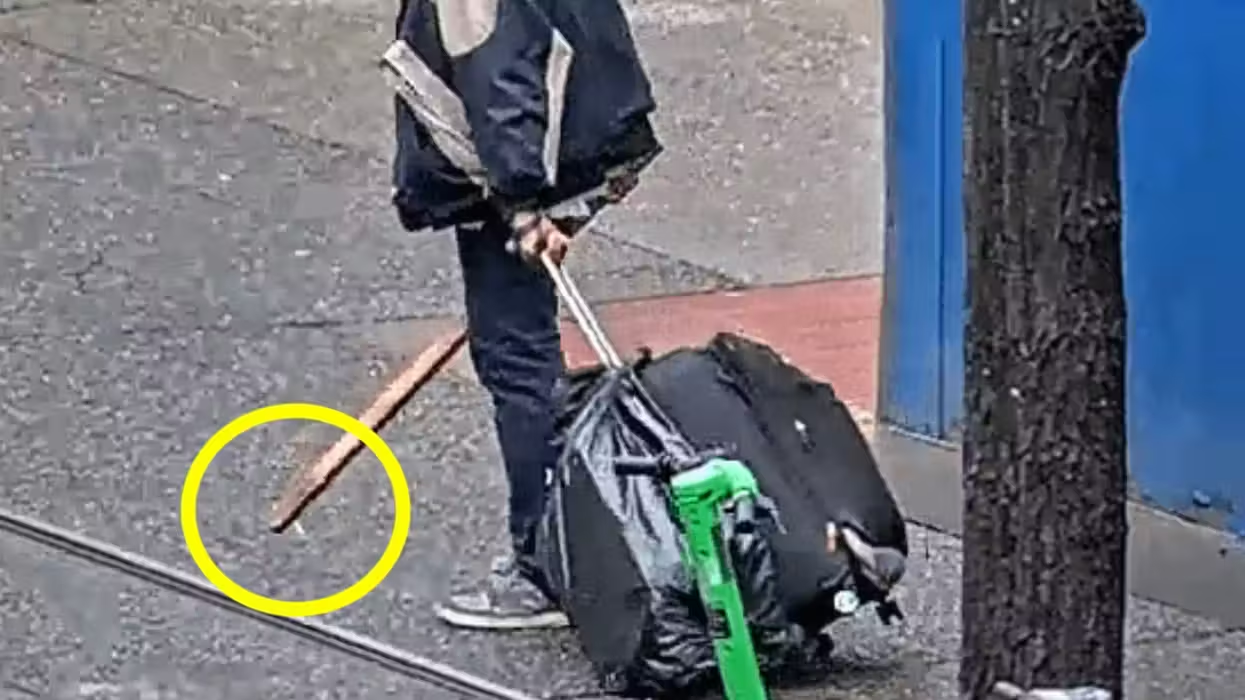
© 2025 Blaze Media LLC. All rights reserved.
TSA Replacing Controversial X-Ray Machines at Some Airports -- But It's Not Why You Might Think
October 19, 2012
ProPublica pointed out this week that the Transportation Security Administration has been switching out some of its controversial backscatter X-ray machines, replacing them with other technology at some of the nation's largest airports.
TSA confirmed with ProPublica that it was in fact replacing some -- but not all -- of the devices, which have worried some individuals and advocacy groups about health and personal privacy. The replacement security technology is millimeter wave scanners. TSA spokesman David Castelveter told ProPublica they are not being installed in response to health concerns or privacy uproar though. He said some of the busiest airports are getting them for speed.
 This machine is a millimeter wave scanner that is deployed in many airports in the United States and is supposedly faster at detecting threats and moving the line along. (Photo: AP/dapd/Joerg Sarbach)
This machine is a millimeter wave scanner that is deployed in many airports in the United States and is supposedly faster at detecting threats and moving the line along. (Photo: AP/dapd/Joerg Sarbach)
Some areas that already have the new scanners installed are Boston Logan International Airport, Los Angeles International Airport, Chicago O'Hare, Orlando and John F. Kennedy in New York.
Castelveter said the replacements are being made "strategically" and is often done to replace older equipment that is then being relocated to smaller airports:
He said the TSA decided to move the X-ray machines to less-busy airports after conducting an analysis of processing time and staffing requirements at the airports where the scanners are installed.The radiation risk and privacy concerns had no bearing on the decision, Castelveter said.
The new machines are expected to speed up lines by relying on a computer program, not necessarily a TSA agent, to sense threats on a person's body. ProPublica found that this technology though could lead to false alarms:
But tests in Europe and Australia suggest the millimeter-wave machines have some drawbacks. They were found to have a high false-alarm rate, ranging from 23 percent to 54 percent when figures have been released. Even common things such as folds in clothing and sweat have triggered the alarm.
The backscatter variety have been criticized before for emitting a small amount of radiation, which can cause cancer at higher levels. The millimeter-wave scanners use low-energy radio waves.
In December 2011, ProPublica profiled both of these types of scanners and the differences between them.
 A millimeter wave scanner is on the left and a backscatter X-ray is on the right. (Image: ProPublica)
A millimeter wave scanner is on the left and a backscatter X-ray is on the right. (Image: ProPublica)
 This shows the difference in what the system shows between millimeter wave scanner (left) and backscatter (right). (Image: ProPublica)
This shows the difference in what the system shows between millimeter wave scanner (left) and backscatter (right). (Image: ProPublica)
ProPublica emphasized that by no means are all backscatters being replaced by these millimeter wave scanners, nor are they stopping new ones from being installed. It reports TSA saying they hope using of a variety of machines encourages competition, which could result in improved technology and lower prices.
According to ProPublica's post last year, there were slightly more millimeter wave scanners installed at the time than backscatter. The two have similar costs as well.
(H/T: Gizmodo)
Want to leave a tip?
We answer to you. Help keep our content free of advertisers and big tech censorship by leaving a tip today.
Want to join the conversation?
Already a subscriber?
more stories
Sign up for the Blaze newsletter
By signing up, you agree to our Privacy Policy and Terms of Use, and agree to receive content that may sometimes include advertisements. You may opt out at any time.
Related Content
© 2025 Blaze Media LLC. All rights reserved.
Get the stories that matter most delivered directly to your inbox.
By signing up, you agree to our Privacy Policy and Terms of Use, and agree to receive content that may sometimes include advertisements. You may opt out at any time.






